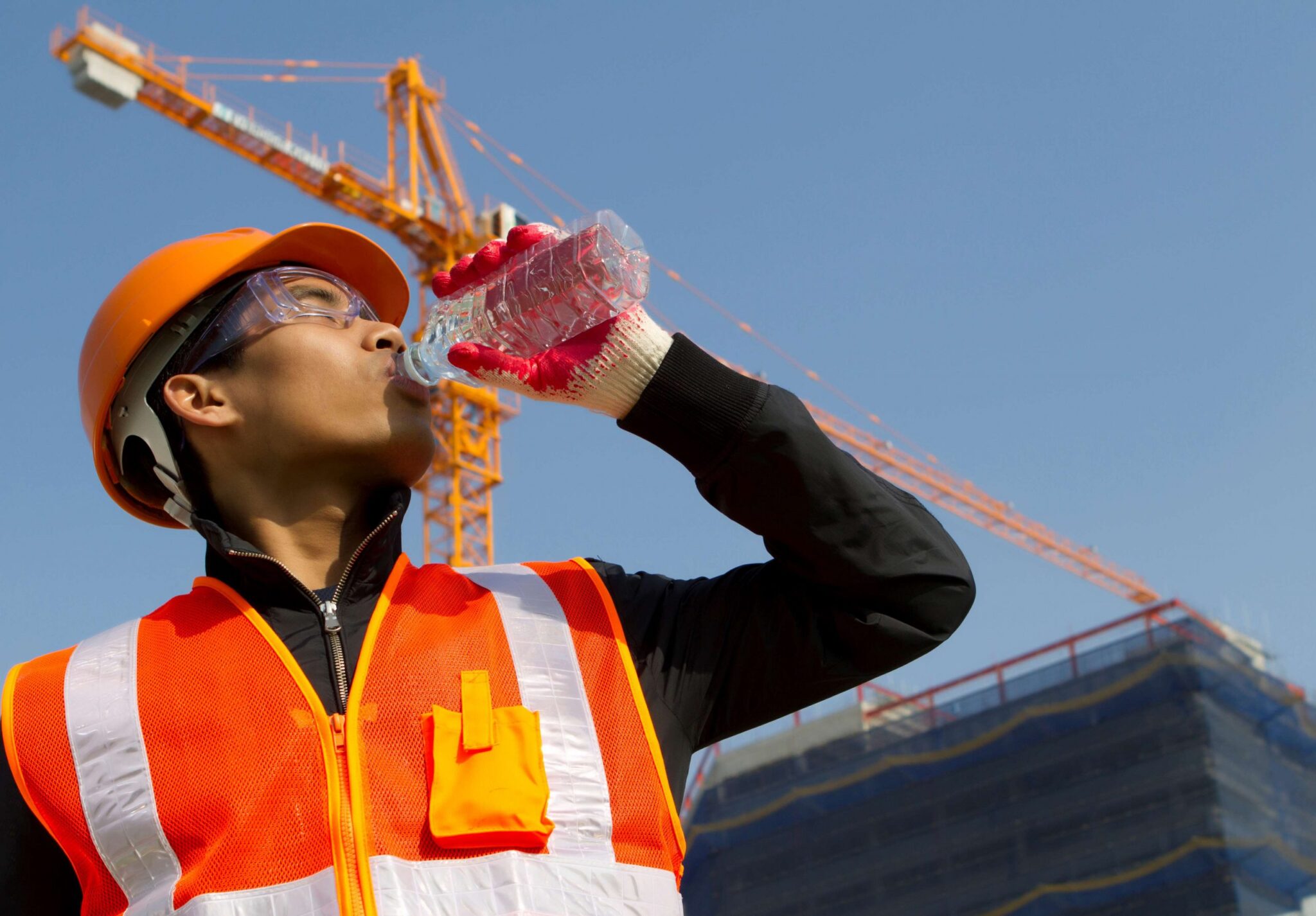The television news has reported that the United States is under a significant heatwave. More than 100 million people will be affected by this climate issue. This suggests a fairly common medical malady within the Worker’s Compensation system and that is heat injuries.
There are three types of heat injuries, the first being heat cramps, the second heat exhaustion and the third (and most severe) heat stroke. Heat injuries occur when your body cannot cool itself, most often secondary to a lack of onboard fluid. Water consumption becomes paramount during these episodes. As you know, your body produces weight when warmed, the sweat evaporates, thus cooling your body. In injured situations, sweat simply is not enough to maintain a body temperature in the proper perspective.
As noted above, the first indicator of a heat injury is cramps. Fairly straightforward, your muscles will cramp up, (a.k.a. Charlie horse), and these cramps can be quite painful. Please note that such heat cramps can occur several hours after the identified/noted exposure. The good news is that with appropriate fluid replacement( replacement to include potassium) these cramps should resolve rather quickly. From personal experience I can tell you that keeping a jar of pickle juice in the refrigerator and consuming this concoction can ameliorate those symptoms rapidly.
The second level of heat injuries is noted as heat exhaustion. This level of compromise to your body can occur when there is extended high temperatures and there is not enough water to be consumed. Certain beverages noted to be a diuretic can exacerbate this problem. Do not think that alcohol consumption or coffee consumption will ameliorate this level of injury.
One of the major differences between the first and the second level is that there will be significant symptoms that might include headache, nausea, dizziness, weakness, irritability, heavy sweating, and an elevated core temperature. The skin will feel hot and dry to touch, or in some instances, profuse sweating can occur. This is a clinical emergency and this individual needs to be evacuated as quickly as possible. Intravenous fluid replacement, cool temperatures, and appropriate medical support would be necessary.
The third and most severe situation is “heat stroke.” The body’s core temperature rises rapidly, the sweating mechanism fails, and the body is unable to cool itself to appropriate levels. You will see issues of confusion, altered mental status, slurred speech, and loss of consciousness. This is a true medical emergency!
There are several issues that the Worker’s Compensation professional must be aware of about this type of injury. Beyond the initial recovery, complications of this event can be extensive. Neurologic symptoms, specific organ damage, (with particular attention to the liver, heart, kidney, and muscles) can occur. There are several literature items documenting that the immune system of humans can be compromised years after. The electrolyte imbalance secondary to insufficient fluid on board atrophy soaring can result in hypernatremia (increased sodium levels), and hypokalemia (decrease in potassium levels) which would compromise crucial body functions.
As you can imagine, an acute kidney injury could occur, and it may not be possible to salvage the kidney, requiring either long-term dialysis or a kidney transplant. Another significant injury would be acute liver failure which may necessitate a liver transplant. A lesser complication could include Disseminated Intravascular Coagulation (DIC), which would cause blood clots in smaller vessels. Obstruction of the vascular system could lead to any number of necrotic or anoxic complications. One must also consider rhabdomyolysis where the muscle fibers themselves died, and the functionality is compromised.
In short, heat injuries are nothing to minimize or pass off. Whenever possible, your clients should be counseled to make sure that more than copious amounts of fluid are available to those individuals who may be even marginally exposed. Everyone’s body chemistry is different, fluid levels vary, and depending on comorbidities could offer a particularly challenging clinical situation.
Additionally, from your perspective as a Worker’s Compensation professional, you must be aware of the long-term health effects of any (even marginal) heat injury. Getting these individuals back to work will take time and will be a gradual protocol. When obtaining the data relative to the injury, please obtain a detailed history relative to the location of the injury, the weather at the time of injury, the activities of the injured individual, and if there was a safe work environment. Also note the findings reported by local healthcare and ambulance evacuation individuals to ascertain the clinical situation. Please remember this is not a clinical situation to be trifled with.

